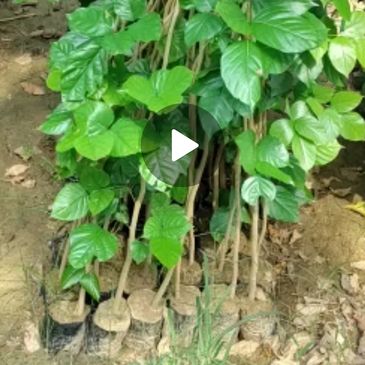Welcome To Revolving Earth 🌍🌍 Call Us On 9670000455, 8176888883 For Urgent Respons
Pongamia, Karanja Avenue Oil Tree KARANJA PLANT SUPPLIER

Pongamia Pinnata Avenue
Pongamia Pinnata Avenue
Pongamia Pinnata Avenue
Pongamia, Karanja Avenue Tree, Poonga-Oil Tree Found in East Asia, Pongamia pinnata or Pongnam is a tropical, fast-growing, medium to large tree usually growing about 15-25 m in height and 50-80cm in bole diameter. KARANJA PLANT SUPPLIER PONGAMIA AVENUE PLANT SUPPLIER

Karanja Avenue Tree
Pongamia Pinnata Avenue
Pongamia Pinnata Avenue
Karanja avenue plant has a broad crown of drooping branches, straight or crooked bole, extensive lateral roots, and creamy white or pink flowers that form into clusters. It is a tree with multiple uses, particularly valued for being a source of oil, wood, medicines, dye, etc. KARANJA PLANT SUPPLIER PONGAMIA AVENUE PLANT SUPPLIER Plant Nursery

Kanji Plant Supplier
Pongamia Pinnata Avenue
Kanji Plant Supplier
Aside from such functions, Pongnam is planted as an ornamental and is used in soil conservation and soil erosion control practices. It is capable of fixing atmospheric nitrogen thus it can be used as green manure.
Karanja Avenue plant Supplier
Karanja Plant Supplier
Agroforestry Uses: Because of its extensive network of lateral roots, and its ability to fix atmospheric nitrogen, this is a preferred species for controlling soil erosion and binding sand dunes[303 ]. Because it tolerates moderate levels of salinity, it is an ideal candidate for recovering a variety of wastelands such as saline soil reclamation[303 ]. It is also used in reforestation of marginal land[303 ]. Grass grows normally beneath the tree so it has been planted to provide shade in pastures. It is also grown as a windbreak and shade provider for tea plantations in Sri Lanka[303 , 317 ]. The incorporation of leaves and the presscake into soils improves fertility[303 ]. Decomposed flowers are valued in the tropics as rich nutrition for special plants, especially when grown in greenhouses[303 ]. The leafy twigs are used for green manuring rice paddies, sugarcane fields and coffee plantations[317 ]. The tree is used as a host for the hemiparasitic sandalwood, Santalum album[303 ]. Other Uses The seed contains 27 - 40% of a thick, yellow or reddish-brown oil[272 , 303 ]. The oil has a bitter taste, a disagreeable aroma and a specific gravity of 0.9371 at 15?c[303 ]. It is used as a lubricant, varnish, water-paint binder and in soap making[303 ]. The seed oil was formerly indispensable as an illuminant in lamps, but has been largely replaced by kerosene[303 ]. Two kilos of mature pods will yield about 1 kilo of husked kernels. Extracted oil amounts to 13.4% of the whole seed pod; 26.97% of the kernels[303 ]. The presscake, when applied to the soil, is valued as a pesticide, particularly against nematodes[303 ]. In rural areas, the dried leaves are stored with grain to repel insects[303 ]. The bark fibre is made into string, twine or rope[303 ]. The roots yield a natural pigment called 'pinnatin'[303 ]. The wood ash is employed in dyeing[303 ]. The wood varies from white to yellowish-grey with no distinct heartwood[303 ]. It is beautifully grained and medium to coarse textured[303 ]. Although it is a moderately strong timber that is relatively easy to saw, turn and finish, the wood is not considered a quality timber because it is not durable, tends to split and warp during seasoning and is susceptible to insect attack[303 ]. It is used for cabinet making, cartwheels, posts, agricultural implements, tool handles and combs[303 ]. It is also suitable as a source of pulp for paper making[303 ] With a calorific value of 4 600 kcal/kg, pongam is commonly used as a fuel wood
Carbon Farming
- Agroforestry Services: Crop shade Plants providing crop shade especially trees.
- Agroforestry Services: Nitrogen Plants that contribute to nitrogen fixation include the legume family – Fabaceae.
- Agroforestry Services: Windbreak Linear plantings of trees and shrubs designed to enhance crop production, protect people and livestock and benefit soil and water conservation.
- Fodder: Bank Fodder banks are plantings of high-quality fodder species. Their goal is to maintain healthy productive animals. They can be utilized all year, but are designed to bridge the forage scarcity of annual dry seasons. Fodder bank plants are usually trees or shrubs, and often legumes. The relatively deep roots of these woody perennials allow them to reach soil nutrients and moisture not available to grasses and herbaceous plants.
- Industrial Crop: Biomass Three broad categories: bamboos, resprouting woody plants, and giant grasses. uses include: protein, materials (paper, building materials, fibers, biochar etc.), chemicals (biobased chemicals), energy - biofuels
- Industrial Crop: Oil Materials, chemicals and energy include bioplastics, biomass, glycerin, soaps, lubricants, paints, biodiesel. Oilseed crop types.
- Management: Coppice Cut to the ground repeatedly - resprouting vigorously. Non-destructive management systems maintaining the soil organic carbon.
- Management: Standard Plants grow to their standard height. Harvest fruit, seeds, or other products. Non-Destructive management systems.
- New Crop Most new crops were important wild plants until recently, although some are the result of hybridization. They have been developed in the last few, decades. What they have in common is that they are currently cultivated by farmers. Examples include baobab, argan, and buffalo gourd. KARANJA PLANT SUPPLIER PONGAMIA AVENUE PLANT SUPPLIER

Copyright © 2025 MANGO, BAMBOO ,MAHOGANY,TEAK PLANT SUPPLIER - All Rights Reserved.
This website uses cookies.
We use cookies to analyze website traffic and optimize your website experience. By accepting our use of cookies, your data will be aggregated with all other user data.